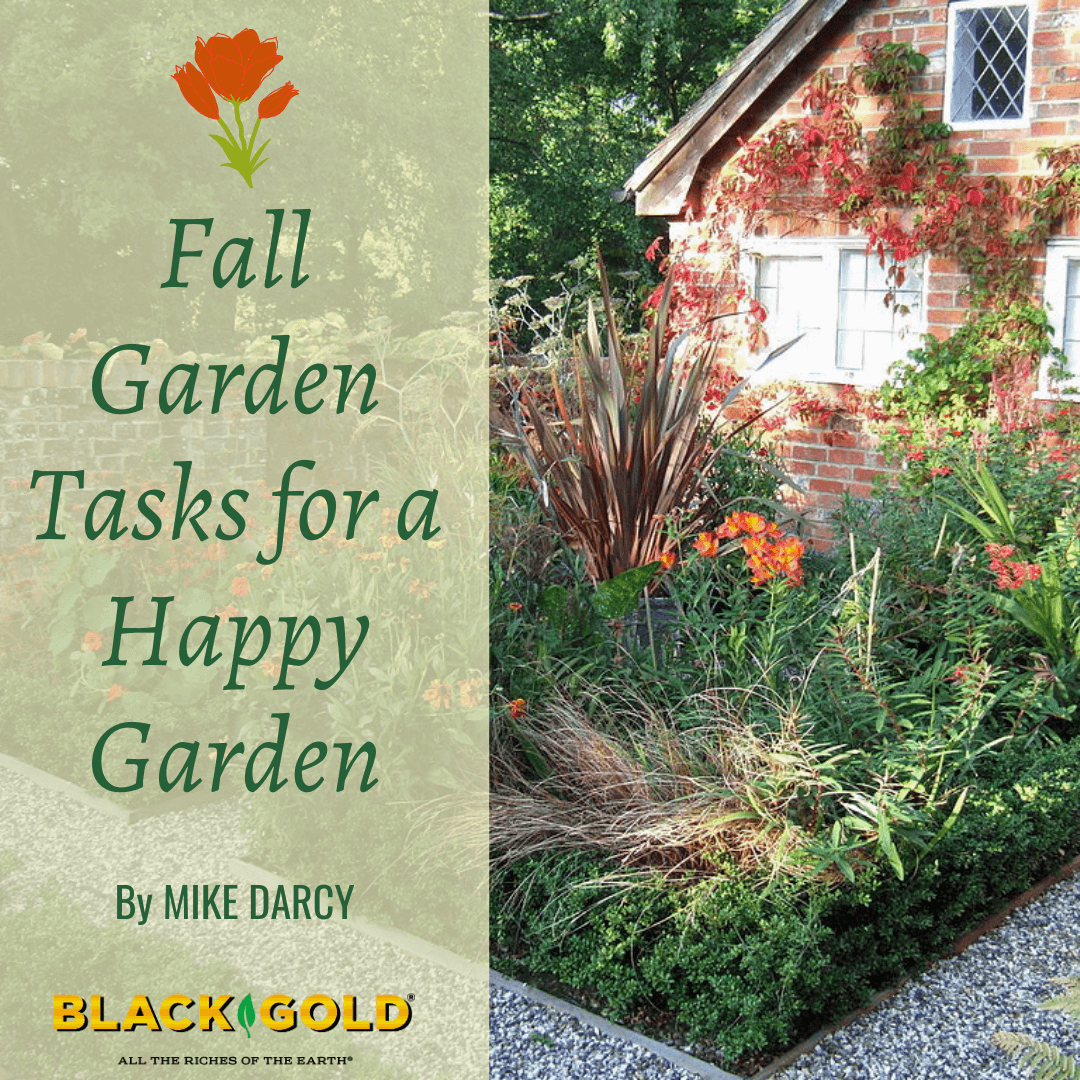
Here in the Pacific Northwest, we often get some wonderfully warm and sunny days in late September and early October. This year is no exception. Now that most of the smoke from the forest fires has cleared from much of the Willamette Valley, our air is clean once again, and we can see blue sky. We are happy, and so are our plants and gardens.
Enjoy the Last Blooms of the Season
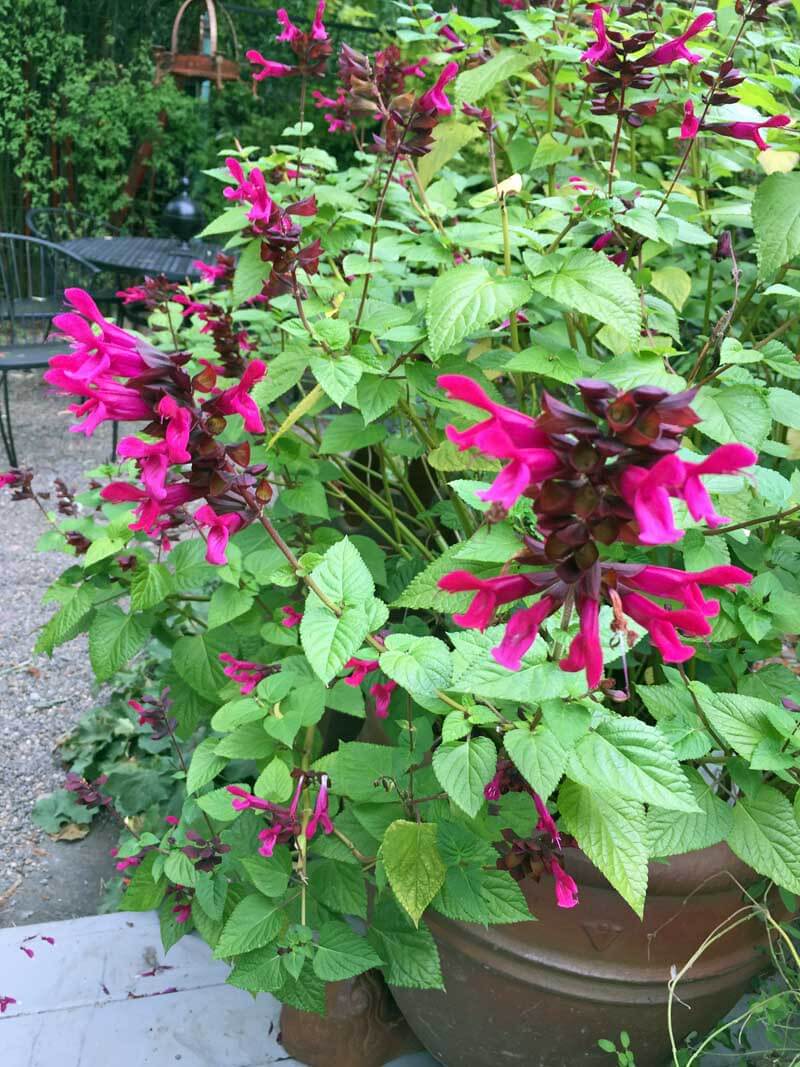
When we have sunny days in October, it forces me to make some decisions regarding my garden and some of these decisions are difficult to make. Many of my containers of blooming annuals are still bursting with color. The fuchsias have not looked better and the flowers on the Salvia just keep going. I am well aware that these blooms will not last much longer but I want to enjoy them as long as I can. Some, like fuchsias, can be brought indoors and tended as house plants through winter (click here to learn how to clean plants before bringing them inside). But, I usually let the frost take them and simply replant in spring, but sometimes I bring a special tender perennial or two inside.
Potting up some chrysanthemums, pansies, and flowering kale can also lighten the impact of losing garden flowers. Add a few decorative gourds and pumpkins and the display will be complete. (Click here for more fall container gardening tips.)
Clean Up
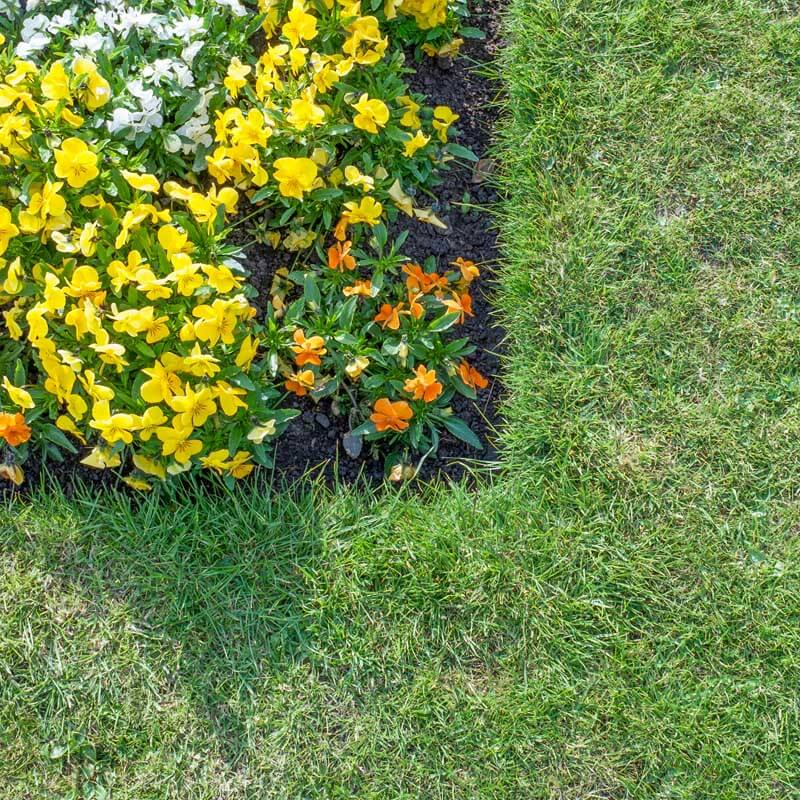
In preparation for winter, now is a good time to begin some light pruning and general fall cleanup. As perennials and this year’s annuals die back, prune them or pull them. Leave up any ornamental grasses and perennial plants with attractive seedheads, but it generally looks best to take everything else back. You can leave some leaves in beds to support overwintering native bees and butterflies. Once your beds are clean, it always looks nice to edge for tidy and attractive gardens all winter. (Click here to watch a how-to video about edging.)
Compost
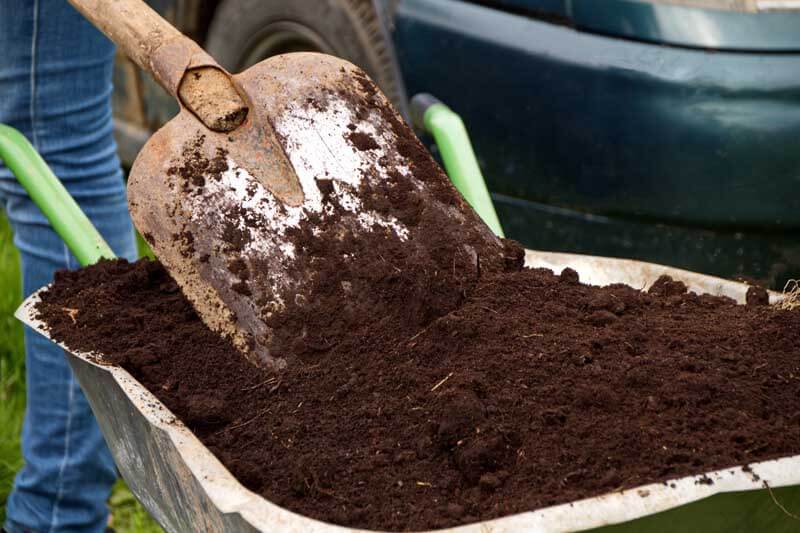
Deciduous trees will soon be losing their leaves, and if you are not composting some of this potentially rich source of organic matter, this is a good time to start. Compost kits and bins are readily available at local garden centers, and they do not need to be fancy. I prefer those with no enclosed bottom. You will learn by experience which plant material breaks down quickly and which does not. I have found that large maple leaves, of which we have an abundance of, break down relatively quickly. Pre-chopping the leaves also helps. Adding grass clippings, that have not been treated with a weed and feed, are a good addition to get the pile heated up to begin the breakdown process. Keep the pile moist, turn it every month or two and add a little granular nitrogen fertilizer to hasten the composting process, if it is moving slowly. I stay away from conifer needles, like fir, spruce, and pines, as well as rhododendron leaves and the leaves from the evergreen magnolia because the decomposition process is too lengthy.
Plant Bulbs
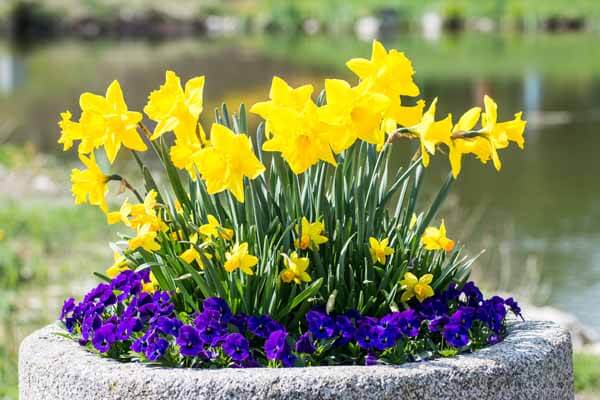
This is the time to plant fall bulbs, and the earlier they are purchased, the better the selection. Many of these bulbs, such as tulips, daffodils, hyacinths, and crocus, can be planted in more than the garden. They also make excellent container plants for spring color on a deck or patio. I like to layer them in pots for maximum effect. (Click here to learn how to make layered bulb pots.) Most bulbs like a soil environment that has an ample supply of compost, so I like to add Black Gold Garden Compost Blend and mix it into the existing soil. When I am planting bulbs in pots, I use Black Gold Natural & Organic Potting Mix in addition to adding a fertilizer formulated for bulbs.
Plant Garlic
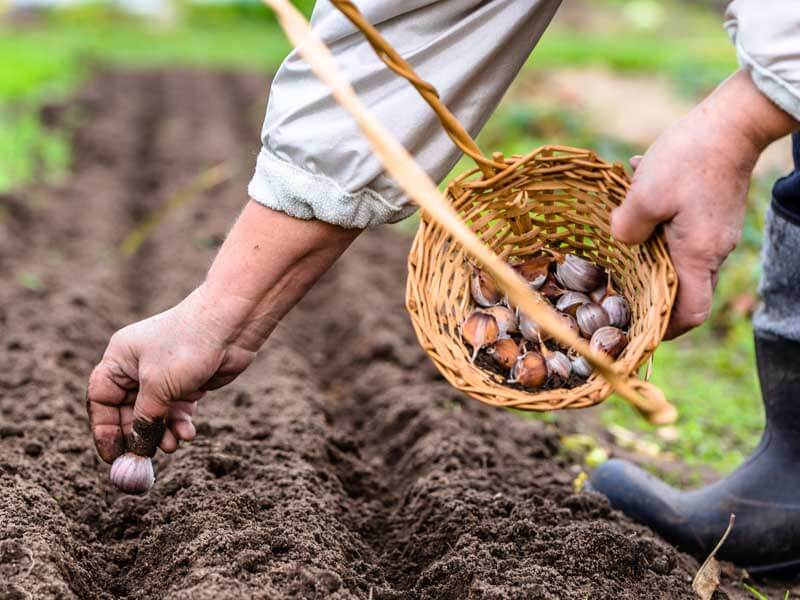
October is also an ideal month to plant garlic. It needs winter cold to bulb up, so if planted now, it will be ready to harvest next summer. Most garden centers have several different varieties, from more tender softneck types to hardy longneck types, and all are easy to grow. Plant garlic in a sunny location with well-drained, fertile soil. (Click here to learn everything that you need to know to grow garlic.)
Plant Hardy Shrubs
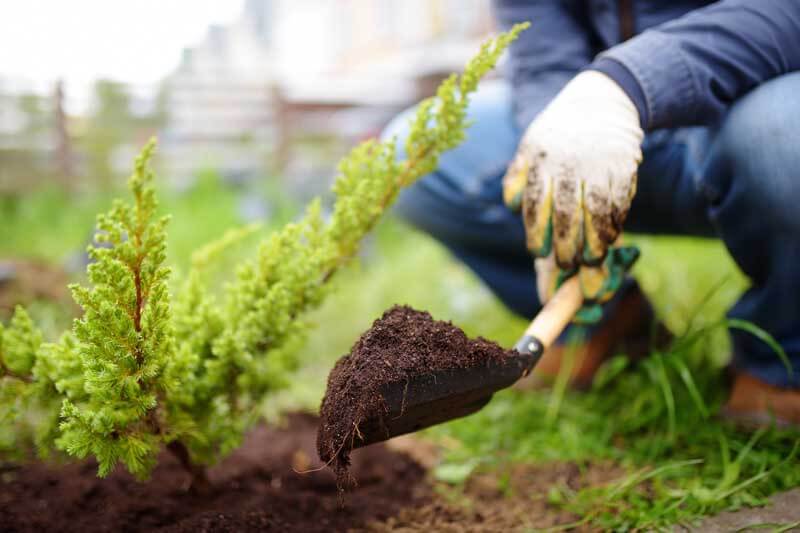
It is a good time to plant hardy shrubs while the soil is still warm. Planting them now will help them settle and set roots in their new location through winter. This will give them a head start on growing in the spring. Dig in Black Gold Garden Compost Blend around the root zone. If the root ball of the shrub is tightly matted with entangled roots, gently break it apart to encourage the roots to grow into their new environment. It also helps to apply a starter/transplant fertilizer.
Dig and Store Dahlias, Cannas, Gladiolus, and other Tender Bulbs
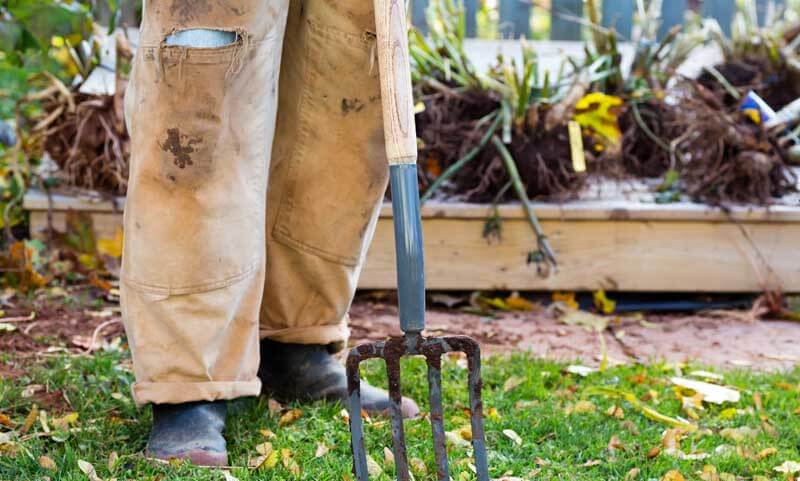
If you are in an area that has hard freezes in the winter, it would be wise to dig dahlias, cannas, gladiolus, and other tender bulbs, and store them in a protected location through winter. Dig dahlias after their tops wilt following the first light frost. Cut the tops back, dig the bulbs, and store them in an aerated plastic bin filled with peat moss. A cool, dark place is best for storage. (Editor’s Note: When digging tubers, keep then intact and be careful not to damage their necks as this is where next year’s buds will appear. Gently clean and dry the tubers before storing them. Pack in a dry peat/vermiculite mix and store in a cool, dry basement, garage or root cellar no colder than 40 degrees Fahrenheit.)
In many areas of the Willamette Valley, where I live, we do not have to dig them up. Our winters are generally mild enough; thick mulch is often sufficient. However, if you have a particular favorite dahlia or canna, be on the safe side and dig it.
Plant a Cover Crop
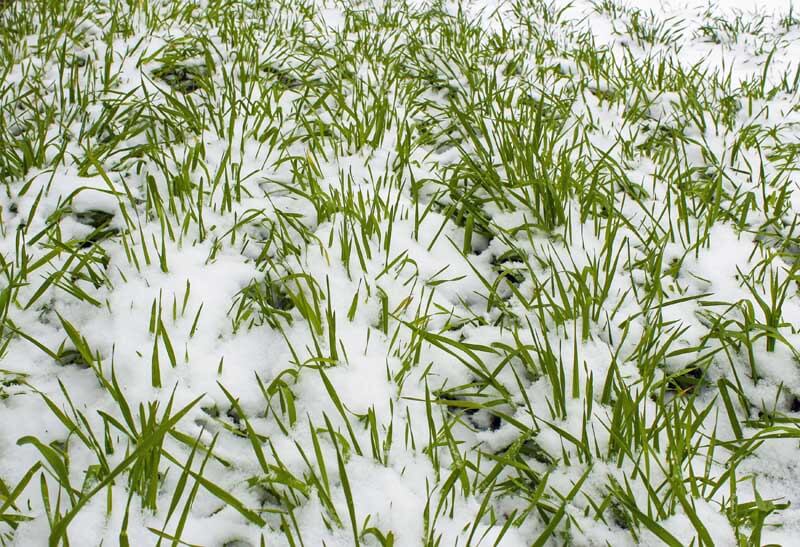
Planting a cover crop over a summer vegetable garden can provide nutrients and organic matter for the next spring season. Cover crop mixes are now available and the sooner they are planted the better. Some, like alfalfa, naturally add nitrogen to the soil and have deep roots that help break up clay soils. Winter wheat, rye and, other grain covers protect your beds from winter weeds. All naturally add organic matter to the soil when tilled under in spring.
Usually, our weather is such that on most days we can continue to enjoy our garden, as we should. Enjoy your fall!

